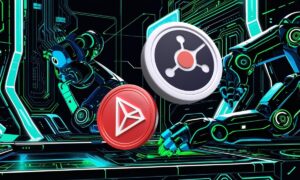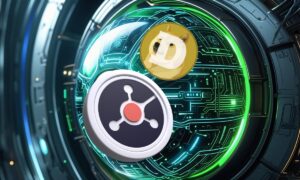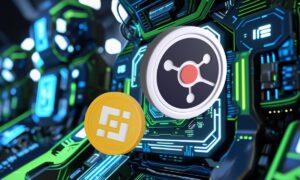The gaming industry is one of the fastest-growing niches in today’s economy; as of 2021, this burgeoning sector was valued at $198.4 billion and is expected to hit $339.95 billion by 2027 at a CAGR of 8.94%. More interestingly, there is an ongoing paradigm shift from centralized gaming platforms to decentralized ecosystems powered by Non-fungible tokens (NFTs) and the metaverse.
So, what’s the big deal about Web 3.0 gaming? At the very core, this new iteration of the internet presents an opportunity to move away from a culture where centralized gaming publishers run the show. Unlike the existing gaming models, NFTs and the metaverse leverage blockchain technology to introduce decentralized ecosystems where players are not only rewarded for participation but also have a say on platform governance.
Given the growth of this gaming niche in recent months, we sought for an interview with the Chief Marketing Officer (CMO) of Myria games, Dave Malcolm, to get first hand insights on the developments. Here is what the long-time gaming market expert had to say;
Q: Hi Dave, thank you for taking time to have this interview. I understand that the Myria games team has previously worked on other Web 3.0 projects, what triggered the decision to focus on blockchain-oriented games?
A: Some of the founders worked together on another blockchain gaming related business, but on the guild side. During this time, the founding team worked closely with many different blockchain games and communities of players and saw the inherent issues with the blockchain gaming scene. So the idea of Myria came to life – a blockchain gaming ecosystem, powered by the Myria L2- creating sustainable, AAA games that are actually fun to play.
Q: How will Myria stand out from other NFT-powered games and metaverse worlds?
A: Myria will offer an extensive range of blockchain games across all genres, much like STEAM does in the web2 space. Games that use blockchain technology or let users exchange NFTs or cryptocurrencies are not allowed on STEAM at all, so there’s a huge gap there to be filled.
We are also building an open permissionless platform to allow any developers to build their games and experiences on our infrastructure, so expect to see a huge and diverse Myria ecosystem. Most other NFT-powered games and metaverse worlds are closed or limited to a handful of partner games.
Q: Most of the existing NFT gaming ecosystems feature play-to-earn rewards, will Myria games also offer ecosystem incentives for the players; if so, what will be the distribution mechanism?
A: Myria Studios, our internal gaming division, has a range of games in development featuring what we call “play-and-earn” mechanics. This means the games are built, first and foremost, to be fun to play, then enhanced with NFTs and blockchain technology to improve the player experience in terms of true asset ownership and utility. You’ll earn NFTs along the way, which are yours to keep forever, and top ranking players on the leaderboard will be awarded with MYRIA tokens.
Q: Apart from the free-to-play games offered by Myria Studios, will the ecosystem feature integration tools for other blockchain-focused games?
A: Yes, great question. This is an integral part of our vision of bringing blockchain gaming to the masses. A core feature of our offering is our Developer Toolkit, which includes simple APIs and SDKs and developer dashboards to allow third-party game developers to essentially “plug in” to our comprehensive suite of blockchain infrastructure, including our Ethereum L2 scaling solution, crypto wallet, NFT marketplace, decentralized exchange. That means developers don’t need to learn smart contract coding, or build their own infrastructure, and can manage their DApps from a simple dashboard.
Q: Still on the intersection of gaming ecosystems, do you see a future where the traditional gaming industry will likely merge with NFTs and the metaverse?
A: Yes, absolutely. I think the integration is inevitable. When players experience the benefit of truly owning their game assets on the blockchain, that is, having full control over them, including being able to extract value by trading or selling them, and also being rewarded with tokens and NFTs for their time spent playing, and therefore benefitting from the growth of the gaming ecosystem they’re contributing to. There will be a huge attitude shift and they won’t accept anything less.
The market is still in its early adoption phase and we see traditional players hesitant to make the complete transition into web 3 – much like what we saw with previous emerging tech trends. This is also what makes building Myria so exciting as we are at the forefront of the next technology evolution and the potential to leapfrog the traditional market is huge!
Q: Decentralization is one of the core principles of NFT gaming and the metaverse. Can you shed some light on how the Myria games ecosystem will be run?
A: Our ecosystem will be supported by a decentralized network of nodes. We believe the network should be run by our community of players so are aiming to get nodes into the hands of as many of our community as possible. Node owners will have voting rights to shape the future of the Myria ecosystem, including voting on game concepts, partnerships, new developments, funding priorities, and more.
Q: What would you say have been the biggest accomplishments to date and when can the NFT gaming community expect a full suite release of the Myria offering?
A: It takes time to execute a vision as great as ours and we’re working hard to make it happen as soon as possible. The Myria L2 is expected to launch late July and we have a full pipeline of games expected to launch using Myria this year. We have also secured some super exciting partnerships, but more on those when they are ready to be announced!
Q: Lastly, what do you think about the recent crypto market downturn, will NFTs and the metaverse survive?
A: The crypto market’s downturn and upturn is nothing out of the ordinary as we’ve seen typical market cycles play out in previous years. The true NFT and metaverse builders during this time will prevail. For us, it’s always about the long term vision of the product.
Conclusion
While most of the NFT games and metaverse worlds are still in the development phases, it is gradually becoming evident that Web 3.0 will mark the next era of innovations. Long gone will be the days when centralized players go home with the lion’s share of revenue; NFTs and the metaverse will usher in decentralized gaming economies, bringing back control to players and opportunities to generate a passive income.



































